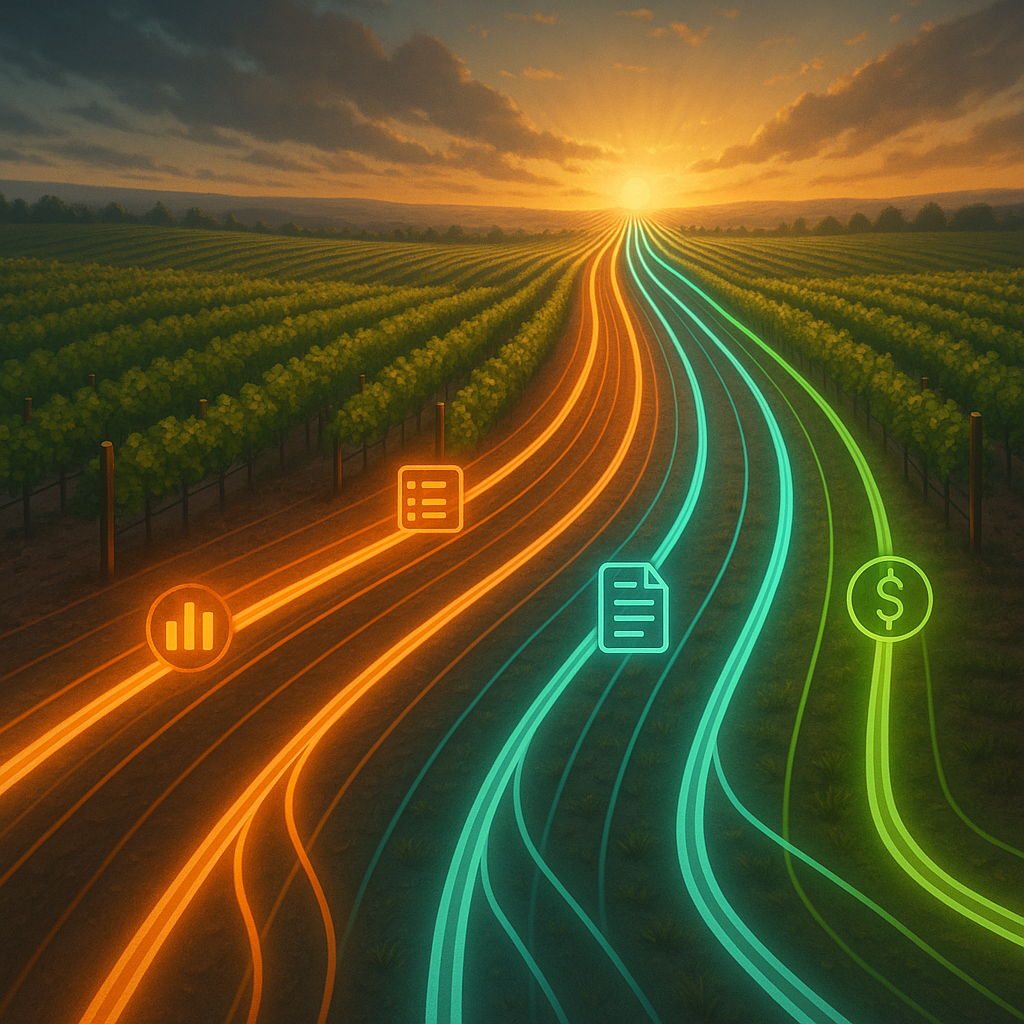Focusing on what software can do is important, but it’s HOW it does it that’s the real make-or-break for your winery.
We see it all the time. Wineries looking for software to help them run their operations have a laundry list of features that they’re looking for:
Can your software track additives? How about packaging? Cost tracking? QR code barrels? Inventory?
Of course, it’s essential to know that the software you’re considering to help you run your operations from grape to bottle can actually do what you need it to do. A lot of words have been written about what features you need to have when it comes to winery applications, so we won’t repeat them here. But the real secret to finding the perfect software for your winery isn’t the What.
It’s the How.
Feature checklists are helpful, but if the software doesn’t work with you—if it doesn’t handle your workflow—it’s never going to work for you. All of those features have to work in practice, and in practice, winery operations are rarely straightforward (just ask anyone who’s worked on the crushpad of an Italian winery during harvest).
Because great workflow doesn’t just save time, it prevents mistakes and keeps your team in sync, making space for what actually matters.
An easy way to tell if your current winery software isn’t up to the task is to look at how many spreadsheets are holding your operation together. We love spreadsheets—but they’re often a sign of something missing. If you're constantly pulling data out of your system, double-entering numbers, or relying on spreadsheets as the real source of truth, it's a sure-fire sign that your software isn’t supporting your workflow. It’s patching it. And that’s a problem.
Great workflow isn’t just about structure—it’s about flexibility. Just like in the vineyard or the cellar, no two days (or vintages) are the same. You might be making wine with the same varietals as the winery down the road, but you're probably not doing it the same way—and let’s be honest, you’re probably not even doing it the same way every year. That’s why your software needs to adapt to how you work, not the other way around. It should support your choices, not second-guess them. That’s exactly why we built Protocols into Blended: to give winemakers a structured way to move quickly without giving up flexibility.
Most winery software assumes your workflow is rigid. It expects every task to be done in a fixed order, with all the details filled in up front, by a single person. But real-life winemaking doesn’t work that way. You might receive materials without knowing the final cost yet. Does your software let you move forward anyway, or does it force the cellar team to pause and wait on accounting? Good software should support real-world handoffs, mid-process updates, and missing information. It should let you fill in what you know, when you know it—and let the right person update it later, without breaking the system or creating chaos.
There are so many areas in winemaking where how a software feature works can mean the difference between headache, heartbreak, or smooth sailing:
- Crush - Does the software allow your team to start working on grapes when they really need to—before the Weigh Tag is finalized? Can you receive grapes or bulk wine blended together on the tag? Can it all be done on a mobile device (that won’t log you out before you’ve had a chance to finish)?
- Blending - Can it handle how you want to do blend trials (or are you going to have set up complex spreadsheets because the software cannot handle it)? Once you’ve got the perfect blend, are the rest of the recording steps easy and intuitive?
- Barrels - Can the software scale to manage the number of barrels that you need? Can it instantly tell you where you do (and don’t) have space for them? Is it easy to get your barrel questions answered, or is it forcing you to oversimplify how you’re recording what’s actually going on in your barrel program?
- Bottling - Can it handle multiple formats? Can it attach the right materials? Is it fast and easy, or does it hold up the line?
- Older vintages - It’s helpful to be able to go back and look at historic vintages (barrel composition and blend details, for example). Can the software match how your vintage library is set up?
- Correcting mistakes - Nobody’s perfect. How easy does the software make corrections to errors? Does it instantly identify the knock-on effects (and update them for you)? Re-entering data is a resource drain that you probably don’t have time for—and your team shouldn’t be penalized by software for doing something that is inevitably going to happen at some point!
- Batch printing - Admittedly, this isn’t the sexiest winemaking workflow subject, but we’ve found it to be a small detail with big resource implications. Why, in the year 2025, would anyone still be printing a Weigh Tag or Work Order sequentially? Blended stores Weigh Tags, BOLs, and Work Orders and allows you to select batches and hit a single button to print them all. This seems minor, until you need to individually print 50 work orders in a given day and your current winery software has to do them ONE. AT. A. TIME…
Ignoring workflow flexibility in software can make your winemaking life unnecessarily difficult. We’re guessing that you have enough challenges producing wine as it is. Wouldn’t you rather be focusing on making the best wine possible? Make sure that your software’s workflow makes your real-world work actually flow.
Whether you’re choosing winery software for the first time or wondering if your current system is holding you back, ask this: Is it truly tailored to how you work, or is it just checking the boxes?





.webp)